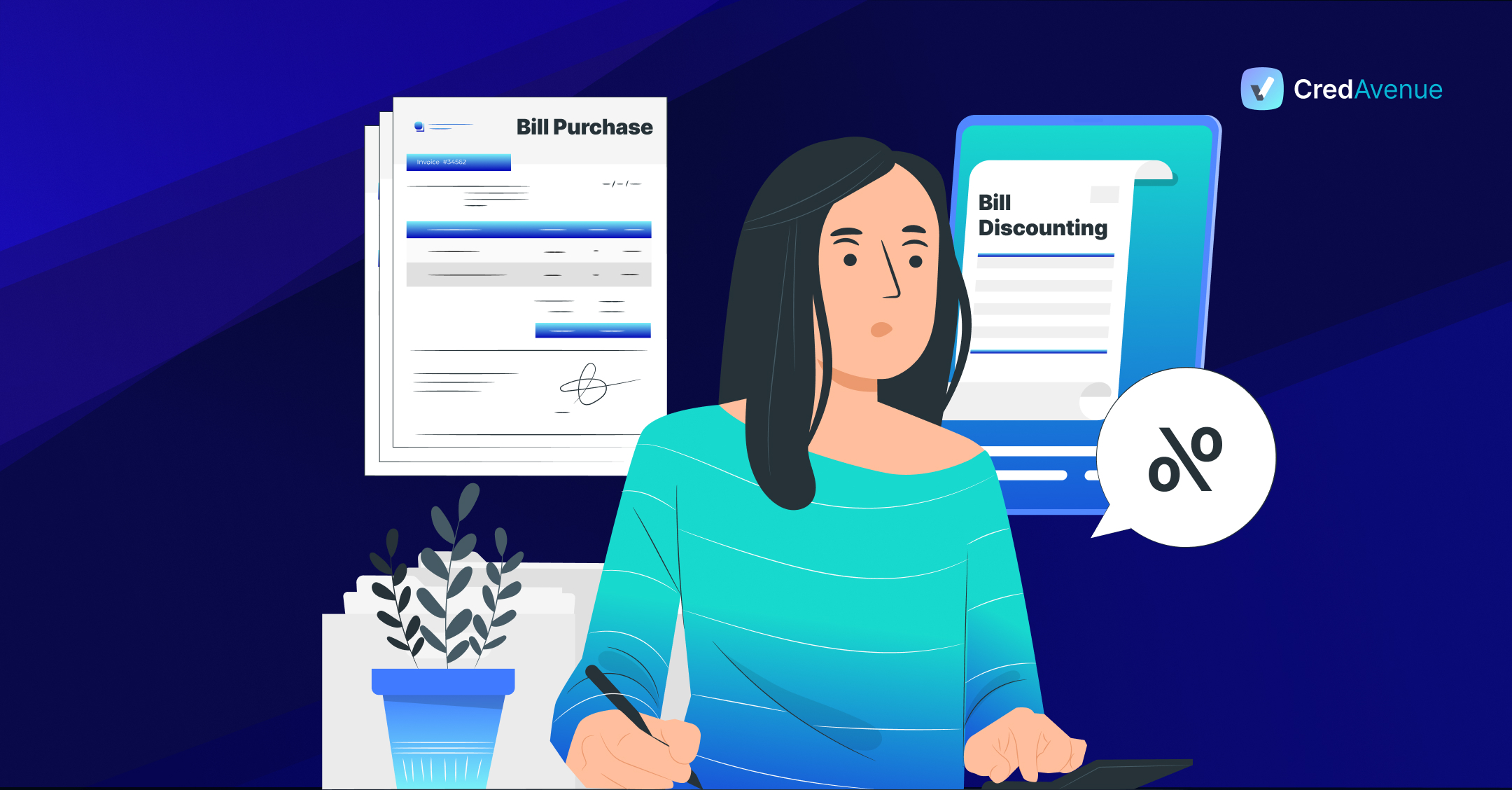
Uncertainty is part of running a business. Despite their most sincere efforts, companies cannot control everything. External factors weigh in eventually to disrupt laid-out plans and pose new challenges. However, adapting to these situations is within control and is ultimately what separates good and great businesses.
Unpaid invoices, for instance, are a common problem in the industry. Clients and partners may delay payments at their ends, triggering cash flow concerns. However, there is always a way out. Bill discounting and bill purchase are two innovative financing tools businesses can use to ensure they’re always stocked with cash. Read on to understand what is bill purchase and bill discount, what bill purchased and discounted is classified as, bills purchased and discounted is classified as which assets, and how both methods can help companies adapt to the challenges of unpaid invoice.
What is bill discounting?
Bill discounting is a creative solution to unpaid invoices. The facility allows businesses to sell their unpaid invoice to a financier, such as a bank, NBFC, or platforms like CredSCF (Supply Chain Finance). It helps small, medium, and large-scale organizations maintain their working capital needs by gaining short-term financial assistance from financial intermediaries.
Let us understand this using an example. Assume a company sold products worth ₹1,00,000 to a customer. The buyer, however, delayed payment because of an unforeseen situation at their end. But the lack of payment starts affecting the balance sheet of the company. So, they decide to sell the invoice to a financier at an interest rate of 10% per annum. The financier pays the company ₹95,000, deducting ₹5,000 as their service fee.
Using the money, the company addresses its working capital needs. Finally, when the customer pays back their debt, the company pays back the lender.
Therefore, while the invoices are sold at a discounted rate of the total amount, the quick turnaround time for such transactions is more valuable to businesses. Platforms like CredSCF are the quickest at processing payments and helping businesses address working capital issues. Additionally, companies benefit from the fact that their customers are not notified that their invoices have been sold. So, businesses retain the control of collecting the bill amount from their customers, which keeps their relations intact.
What is bill purchase?
Bill purchase is not too dissimilar from bill discounting, with both bills purchased and discounted having the same effect in balance sheets. It is also designed for businesses who want to leverage their outstanding invoices for an urgent cash injection. They contact a financial institution, called a factor, and sell the invoices at a discounted rate. The money can be used to fund working capital needs, pay vendors, or start a new venture.
The unique feature in bill purchase is that the financial institution retains the right to recoup the receivables from the businesses customers. Once businesses engage in bill purchase and get their money from the financial institution, they no longer have a say in how the latter collect the invoice amount from the customers.
How are bill purchase and bill discounting different?
Businesses can benefit from bill discounting as well as bill purchase. They both have unique offerings that can help enterprises manage their balance sheets. However, while they may look the same, there is a fine line of difference between bill discounting and bill purchase. Knowing these financing methods better can help businesses understand which one suits them better. Here is a lowdown on crucial differences between bill discounting vs bill purchase.
- Type of product
By definition, bill purchased and bill discounted are inseparable. However, on reading between the lines, significant differences emerge between the two. Bill discounting is like a loan. The financier offers a percentage of the unpaid invoices, which are paid once the business receives money from the customer. In bill purchase, funds are exchanged only once between the company and the financial body.
- Collection mechanism
The collection mechanism is the most glaring and vital difference between bill purchase and bill discounting. In the former, the financial institution buys the invoice outright from the business and retains the right to recoup the money from customers. Bill discounting, meanwhile, leaves it up to the business. They have the right to recover the unpaid invoices from the customers.
Bill purchase vs bill discounting: which one is better?
There is not a lot of difference between the definition of bill purchased and bill discounted and their effect on balance sheets. The different variants of bill purchase and discounting, including export bill purchase and discounting, purchase lc bill discounting, and foreign bill purchase and foreign bill discounting, are also essentially the same.
The only significant difference between the two is their collection mechanism. Customers are not notified that their invoices have been sold in bill discounting. It helps keep customer relations intact. Bill purchase is the exact opposite. Customers are notified about it as the financial institution handles the collection of payments.
Yet, it isn’t easy to compare the two. Bill discounting can keep relations intact, but bill purchase works better for businesses that do not have an efficient collection process. In the end, it boils down to the strength and needs of individual companies.




